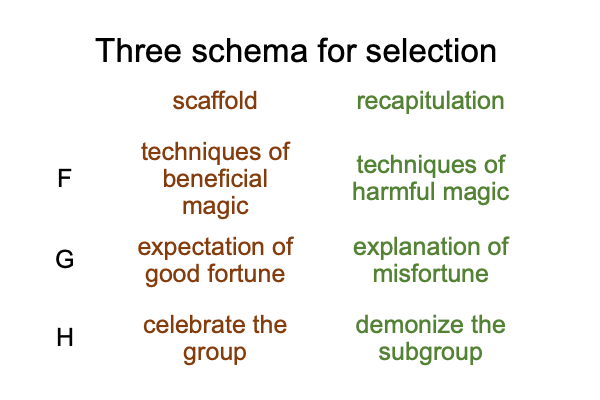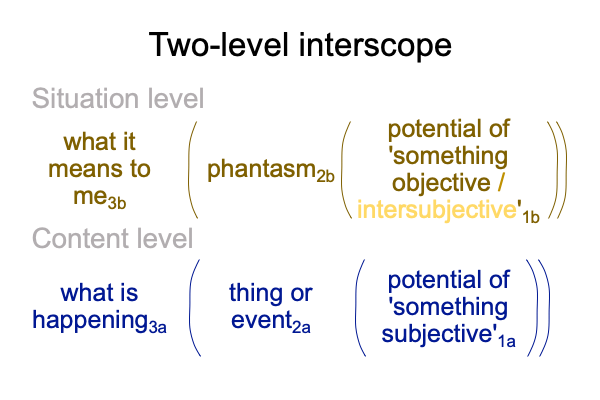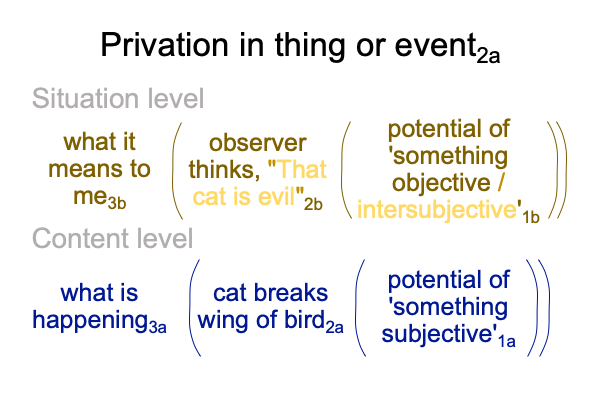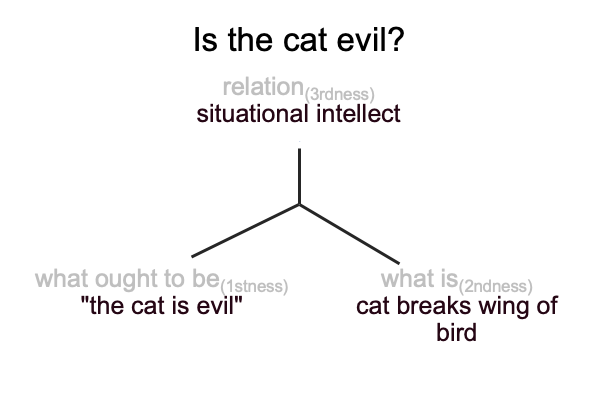Looking at Manvir Singh’s Article (2021) “Magic, Explanations, and Evil” (Part 3 of 5)
0010 Singh identifies two principle components to harmful magic, witchiness (PC1) and the evil eye (PC2).
What happens next?
0011 Singh proposes a model to account for the observation. The model consists of three schemes of cultural selection.
The first selection (F) is for intuitive techniques of harmful magic.
The second selection (G) is for plausible explanations of misfortune.
The third selection (H) is for myths that demonize a subgroup (in this case, sorcerers and witches).
0012 Singh misses the scaffolding beneath the glass that he stands on. His exposition is on malevolent magic. He does not seem to realize that malevolent magic recapitulates the open, generative magic of group living, including…
…intuitive techniques for beneficial magic (F’)…
…plausible explanations of fortune (G’)…
…myths that celebrate the group (H’).
0013 Here is a table.




